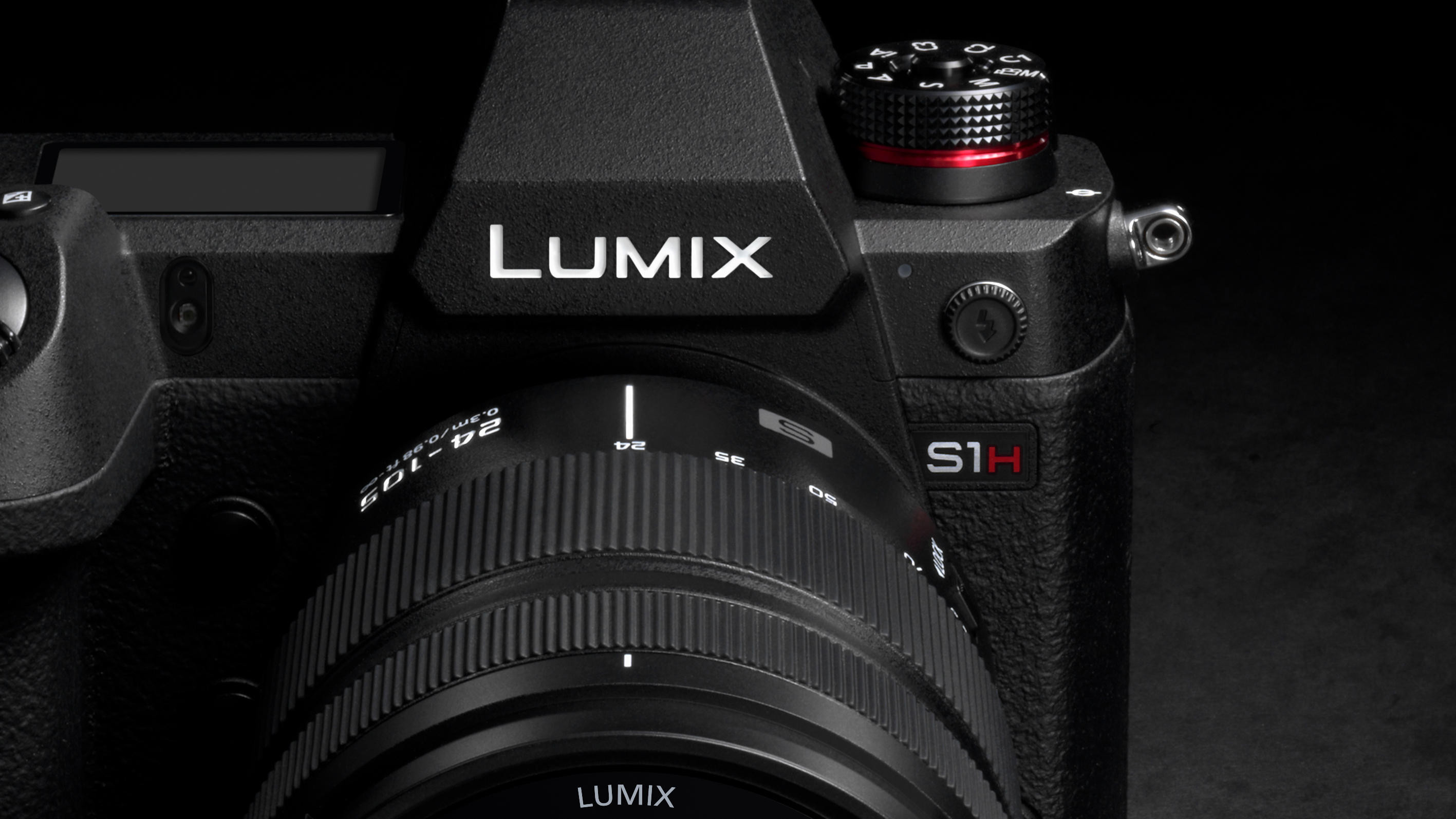Finally! Panasonic S1H now official, with 6K video and a new 24.2MP full-frame sensor
The first 6K-shooting mirrorless camera of its kind

We've known that Panasonic was readying a new S1H mirrorless camera since the company spilled some details about the model at Cine Gear Expo back in May – but the company only told us so much at that point.
Now, with the official launch, we know exactly what the model looks set to offer the full-frame-seeking videographer, and we've spent some time with the S1H, so be sure to check out our hands-on Panasonic Lumix S1H review.
- These are the 10 best full-frame mirrorless cameras right now
- Read our in-depth Panasonic S1R review
- Sensor sizes explained: what you need to know
Up until now, what was known was that the camera would be capable of capturing 6K footage at a maximum 24p in a 3:2 ratio, together with 5.9K footage at 30p captured in the more standard 16:9. V-Log and V-Gamut were also set to be installed on the camera as standard – so no paid-for updates here as has previously been the case elsewhere.
We also knew the model would have a full-frame sensor and a Venus processing engine, and that it would be fitted with the L mount. Panasonic has now confirmed that the sensor will be a 24.2MP chip, one with an optical low-pass filter in front of it to keep moiré from affecting images.
While the Panasonic S1 also packs a 24.2MP sensor, the one here is said to be newly developed for the S1H. As on the S1, however, users can call upon a High Resolution Mode to capture and combine a number of exposures, which results in images output with an effective resolution of 96MP.

The sensor also promises over 14 stops of dynamic range, which Panasonic points out is virtually the same as those of the company's Cinema cameras, as well as a top native sensitivity of ISO51,200.
The S1H follows earlier Panasonic models in offering Dual Native ISO settings, the ISOs themselves being ISO640 and ISO4000. The company claims this allows the user to switch between high and low sensitivities "with almost no increase in noise or other artifacts".
Sign up for breaking news, reviews, opinion, top tech deals, and more.
Panasonic claims its developments in heat dispersion also mean the camera can record video for an unlimited length of time in all modes. HDR and Hybrid Log Gamma (HLG) modes, in addition to Anamorphic 4:3 shooting, are on hand, and footage can be output in 4:2:2 10-bit 4K quality at 60p/50p through the full-size HDMI port.
Super-stable
As with the S1 and S1R, the Panasonic S1H is set to arrive with body-based image stabilization, removing the need for this in the lens. If you do use a lens with this in place, however, the five-axis body-based stabilization buddies up with two-axis lens stabilization to provide a 6.5-stop Dual I.S. system; otherwise, the body-based I.S. can achieve six stops of correction on its own, which is impressive.
Around the back, the S1H has been designed with a 3.2-inch LCD screen with a 2.33 million-dot resolution, which can be tilted and rotated. It also matches its S1 and S1R siblings in packing a 5.76 million-dot viewfinder with a 0.78x magnification, which has impressed us greatly in its performance, and these are joined by a 1.8-inch LCD on the top plate to keep users informed of camera and shooting settings.
Panasonic has designed the body with a magnesium alloy full die-cast top, front and rear frame, with sealing on every joint to protect against dust, splashes and freezing temperatures. The camera also sports a mechanical shutter with a 400,000 actuation rating, as well as two SD-type card slots that provide support for SDHC and SDXC cards up to the UHS-II and Video Speed Class 90 standards.
DFD autofocus
Like its S1 and S1R siblings, the S1H also employs a contrast-detect autofocus system with Depth From Defocus (DFD) technology, while Eye AF is also on hand to help the user focus on the pupils of a subject's eye.
The new camera also equals the S1R in having a 9fps burst shooting option, which decreases to 6fps with continuous focus. 6K PHOTO and 4K PHOTO modes, which allow the users to respectively capture 18MP images with a 30fps burst or 8MP images with a 60fps burst, can also be called upon.
Much like the Sony A7R IV, Wi-Fi can work over both 5GHz and 2.4GHz bands, while Bluetooth Low Energy (4.2) is also included, promising a stable connection to a smartphone or tablet for constant image transmission. Tethered shooting through the USB port is also possible, while battery life is promised to be two hours in all recording modes.
New lenses
Panasonic has also announced a pair of lenses alongside the new model, one being the Lumix S Pro 24-70mm f/2.8 that was promised earlier in the year, and the other the Micro Four Thirds-friendly Leica DG Summilux 25mm / f/1.4 II ASPH.


The S1H will have a body-only price of $3,999.99 in the US and will be out at the end of September. In Australia, though, the new camera will be available starting October 2019 and will set customers back by AU$5,999 for the body alone.
The two new lenses will be available globally starting October this year, with the Leica DG Summilux 25mm f/1.4 II ASPH carrying a price tag of $699.99 / AU$999, and the Lumix S Pro 24-70mm f/2.8 retailing at $2,199.99 / AU$3,599.
Pricing for the UK (for camera and lenses) has not yet been made available.